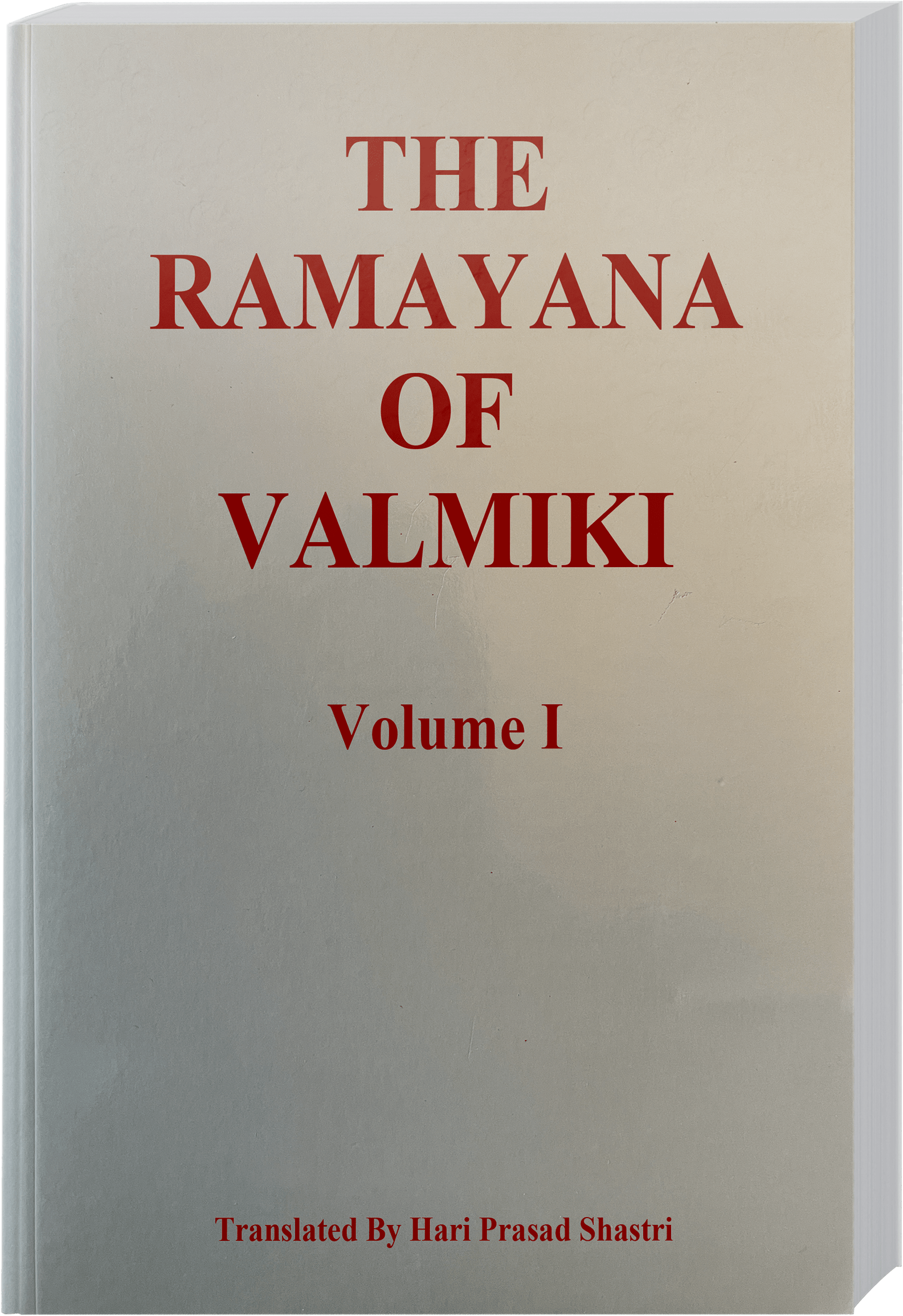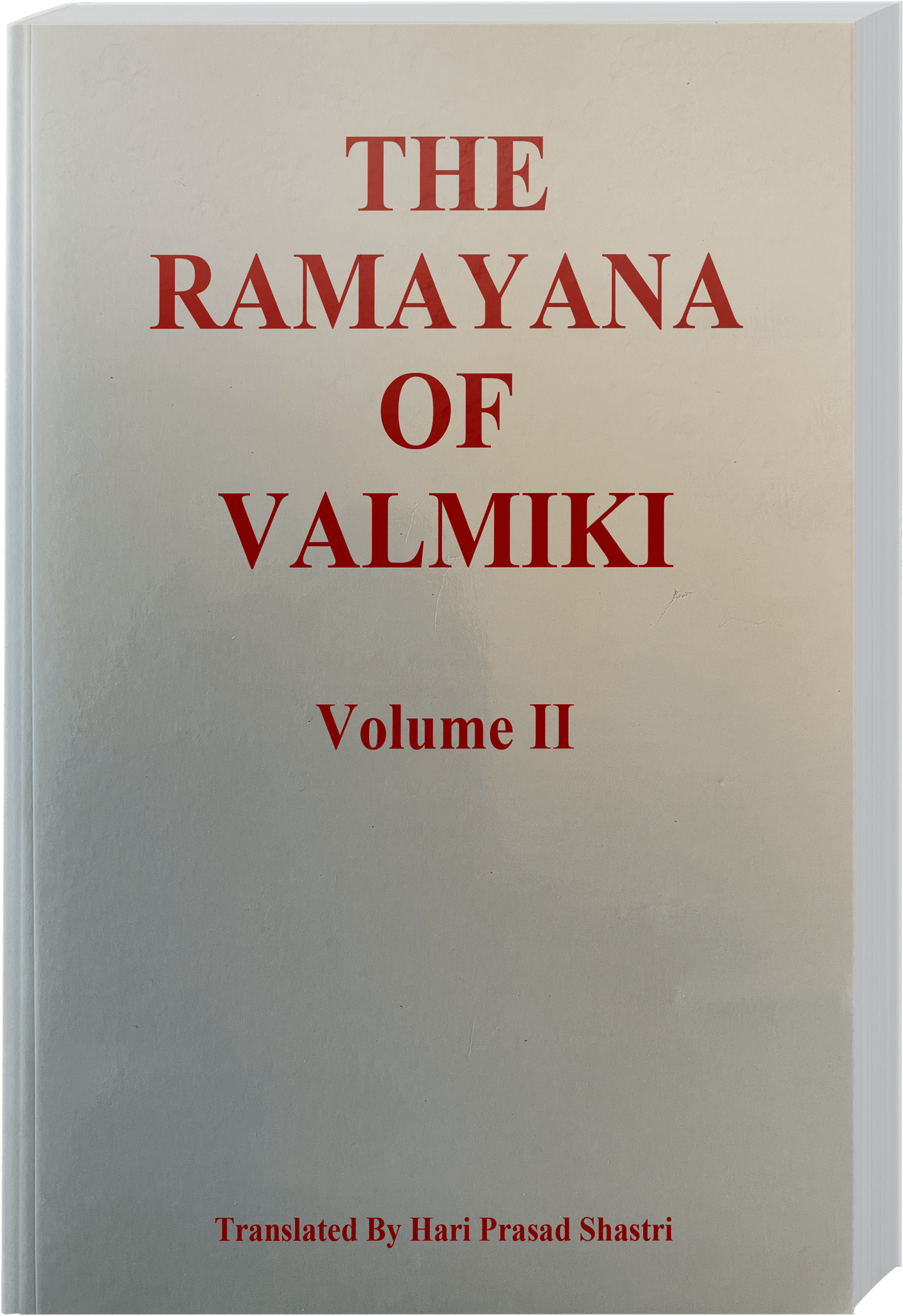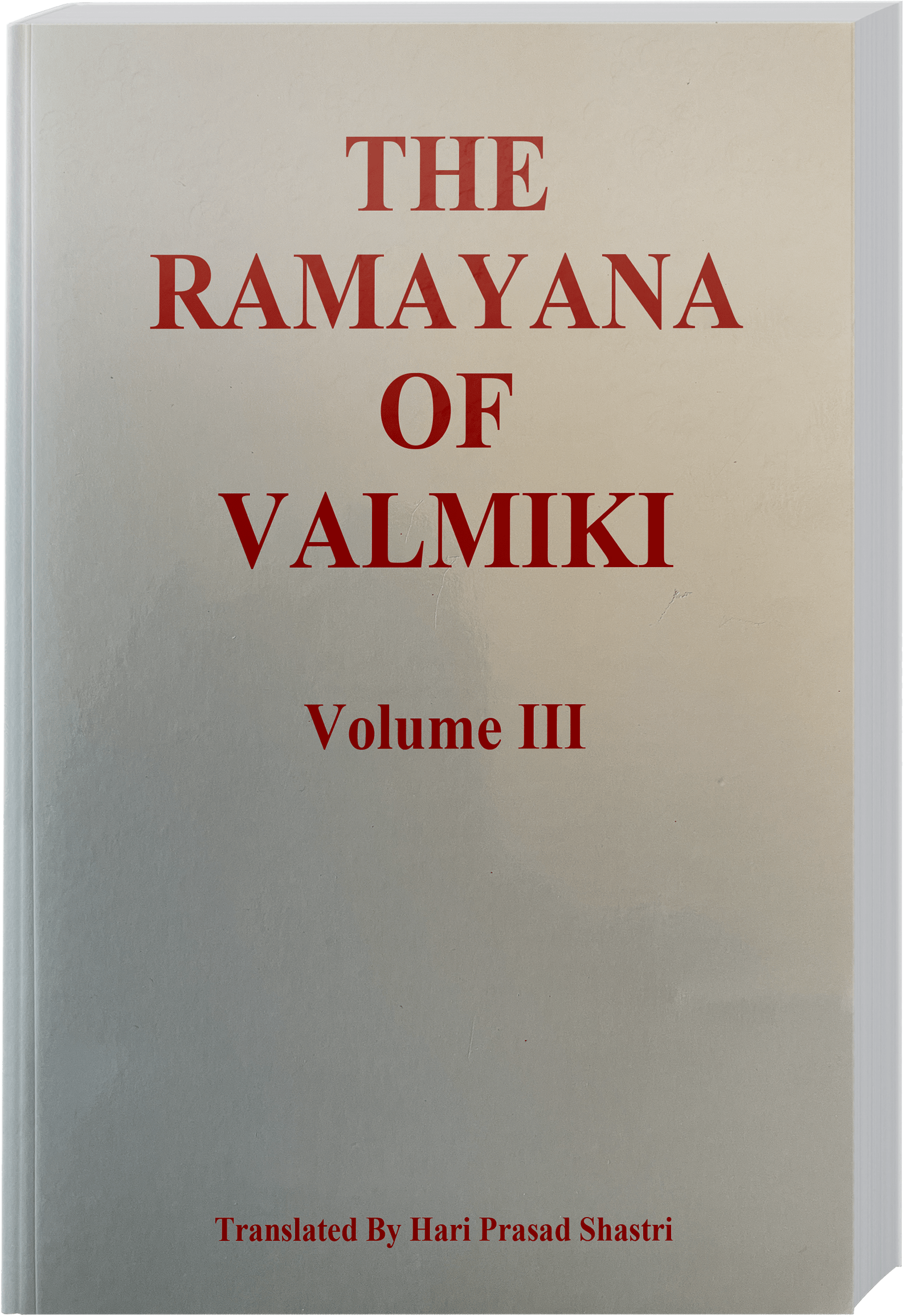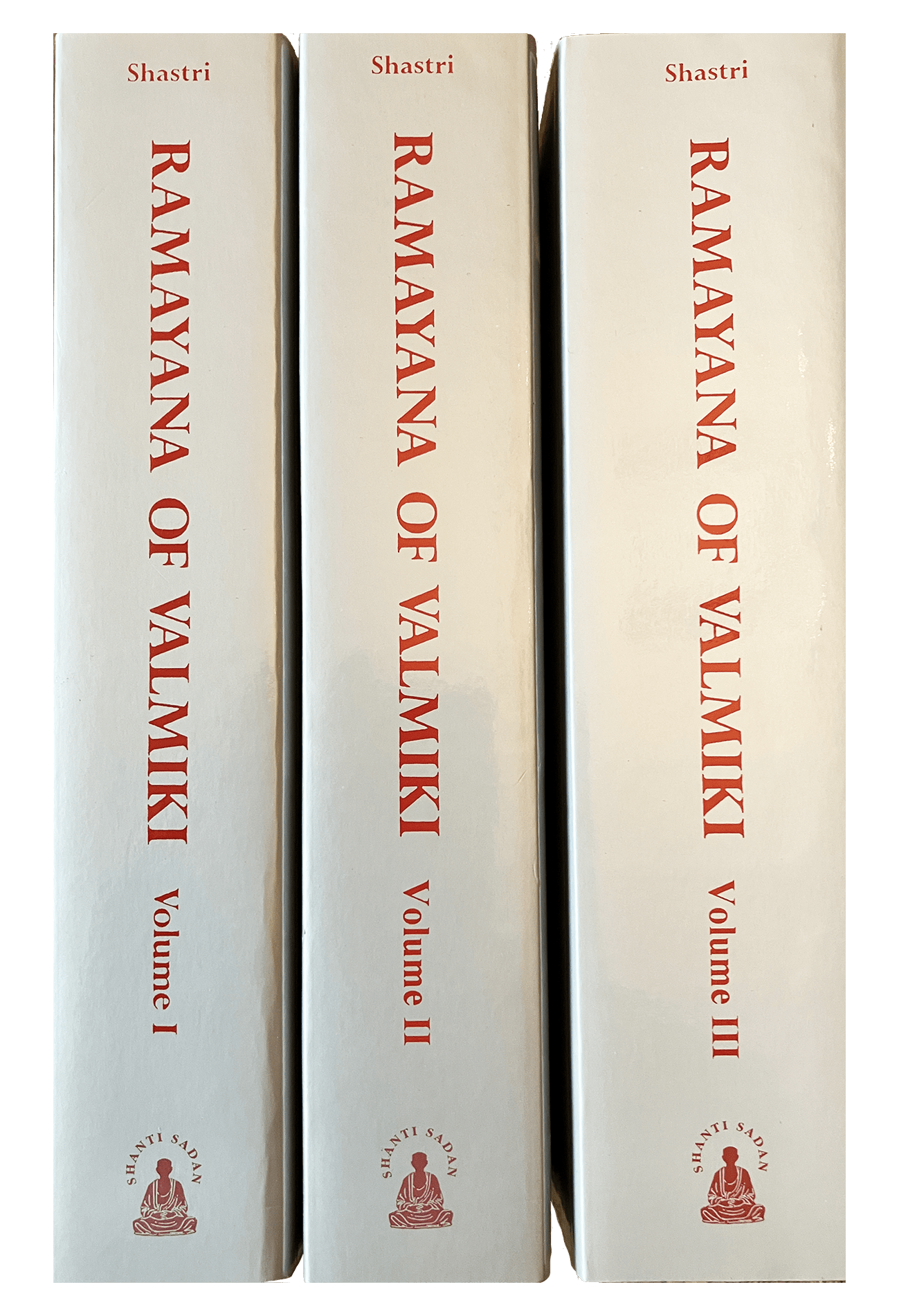
of Valmiki

of world literature
-
The Ramayana of Valmiki VOLUME I
The first two books of the epic. Book one, Bala Kanda, in 77 chapters, and book two, Ayodha Kanda, in 119 chapters.
-
The Ramayana of Valmiki VOLUME II
Books three, four and five of the Ramayana. Book three, Aranya Kanda, in 75 chapters. Book four, Kishkindha Kanda, in 67 chapters. Book five, Sundara Kanda, in 68 chapters.
-
The Ramayana of Valmiki VOLUME III
Book six of the Ramayana, Yuddha Kanda, in 130 chapters. And book seven, Uttara Kanda, in 111 chapters.
-
The Ramayana of Valmiki Full Set
The complete epic of seven books, published in three volumes. The books are stitch-bound for easy reading and durability.
Translated by
Hari Prasad Shastri
Hari Prasad Shastri (1882-1956) was born in the United Provinces of India. He received a traditional education, finishing his studies as a pupil of the Professor of Sanskrit at Varanasi (Benares) University, Pundit Rama Mishra Shastri. He later became well-versed in English, Persian, Chinese and Japanese literature and philosophy.
As a young man he was well-known as a lecturer on spiritual matters in Northern India. He learnt the traditional methods of spiritual Yoga practice from his own Teacher, and also visited Yogis and Mahatmas living in the region of the Himalayas.
In 1916 he went to Japan where he lectured at the Imperial University and Waseda University in Tokyo. As a result of a chance encounter with Dr Sun Yat Sen, the first President of the Republic of China, he was invited to that country. While in China Hari Prasad became a Dean at Hardoon University and Professor of Philosophy at Nankwang College.
He travelled to London in 1929 and there founded a Centre of the Yoga of Self-Knowledge. He gave hundreds of lectures and published many original works and translations, notably The Ramayana of Valmiki.
Testimonials
‘Ramayana has been one of the perennial sources of inspiration of all later poets, philosophers and kings in India. There is not a single anecdote or incident which does not breathe kindness, benevolence, justice and truth. This immortal epic Hari Prasad Shastri has succeeded in presenting in a lucid, limpid and fluent language, retaining as far as possible the unique beauties and peculiarities of the original work. It reads like a novel. The conversations are vivid and lend a realistic tinge to the narration. All the characters are very finely depicted and they leave an indelible impression on the mind.’




